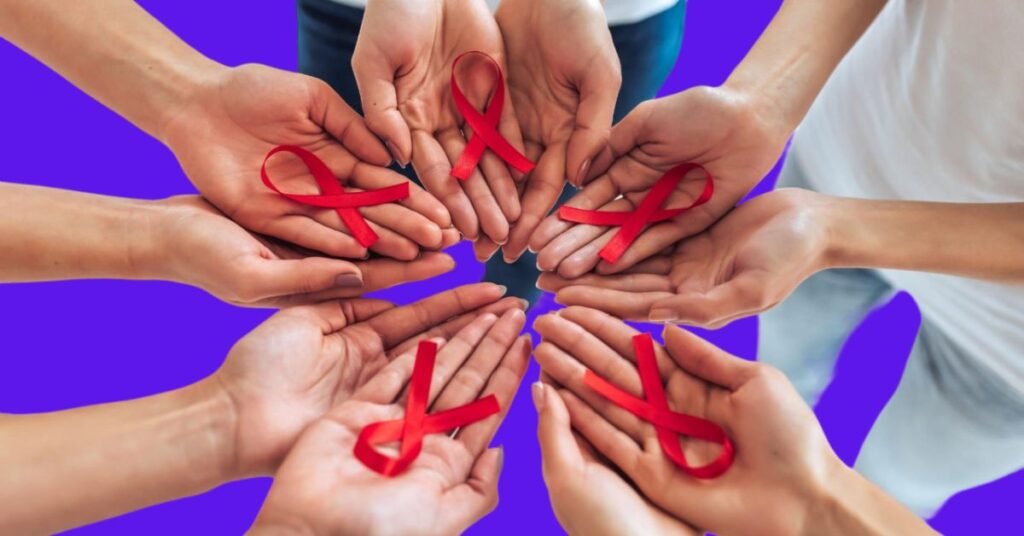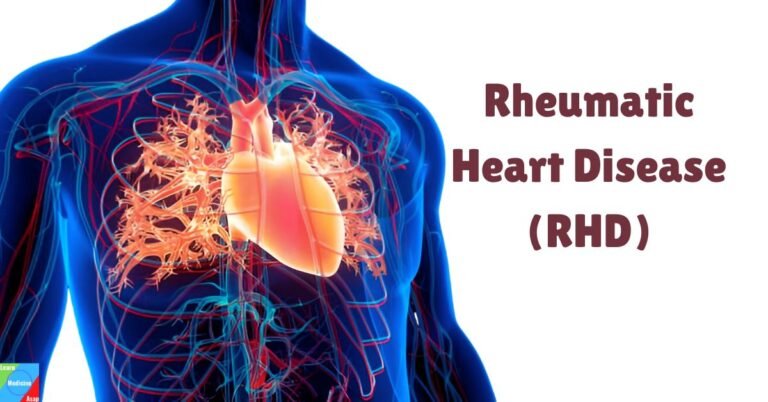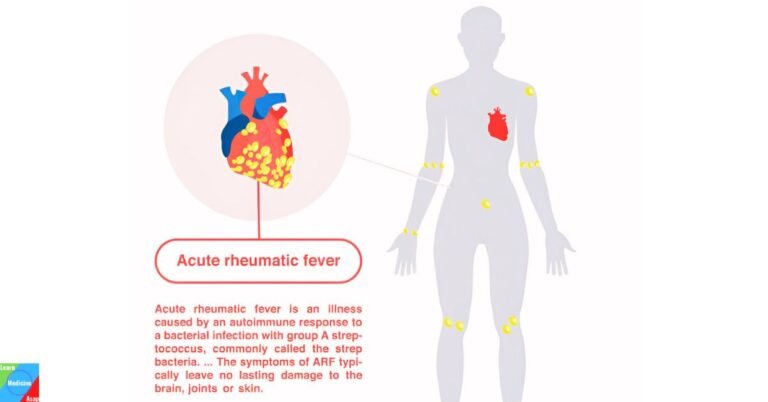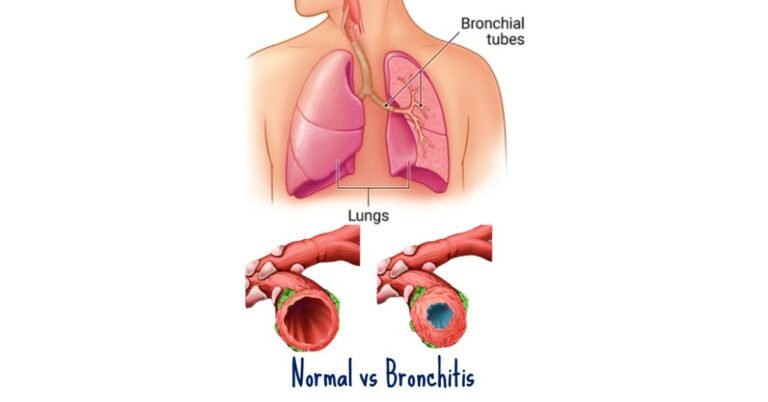Types | Transmission | Stages | Symptoms | Complications | Diagnosis | Treatment | Prevention | Takeaway | FAQs
Human Immunodeficiency Virus (HIV) is a significant global health concern, as it weakens the immune system, making the infected individual more susceptible to a wide range of opportunistic infections and certain types of cancer.
What is HIV?
HIV, which stands for Human Immunodeficiency Virus, is a lentivirus that primarily infects human immune cells, specifically the CD4 cells (T cells), which help the immune system fight off infections. If left untreated, HIV can lead to the disease known as Acquired Immunodeficiency Syndrome (AIDS).
What is AIDS?
AIDS is not a separate virus or pathogen; rather, it is a condition that develops when an individual’s immune system has been significantly weakened by HIV. The hallmark of AIDS is a severely compromised immune system, which makes the affected person highly vulnerable to opportunistic infections and certain types of cancer. AIDS is diagnosed when the CD4+ T-cell count, a key component of the immune system, falls below a critical level (usually below 200 cells/mm³) and/or when the individual experiences specific AIDS-defining illnesses.

What’s the difference between HIV and AIDS?
HIV (Human Immunodeficiency Virus) and AIDS (Acquired Immunodeficiency Syndrome) are distinct stages in the same disease process. HIV is the virus that causes the condition, while AIDS is the advanced and severe stage of HIV infection characterized by severe immunosuppression and specific, severe health complications. Effective antiretroviral therapy (ART) can prevent the progression from HIV to AIDS, allowing individuals to lead longer and healthier lives.
What are the types of HIV?
There are two main types of HIV: HIV-1 and HIV-2.
HIV-1:
- Global Prevalence: HIV-1 is the most widespread and predominant strain of the virus globally.
- Transmission: It is primarily transmitted through contact with certain body fluids, such as blood, semen, vaginal fluids, rectal fluids, and breast milk.
- Pandemic Impact: HIV-1 is responsible for the majority of HIV infections worldwide and is the main contributor to the global HIV/AIDS pandemic.
HIV-2:
- Geographic Distribution: This strain is more prevalent in West Africa, although cases have been reported in other parts of the world.
- Transmission: Similar to HIV-1, HIV-2 is transmitted through contact with certain body fluids, but it is less easily transmitted from person to person.
- Clinical Progression: HIV-2 often has a slower progression to AIDS compared to HIV-1, and individuals infected with HIV-2 tend to have lower viral loads.
It’s crucial to note that within each type, there are various subtypes or strains of the virus. These subtypes can have distinct genetic characteristics, affecting aspects such as transmission rates, disease progression, and responses to antiretroviral therapy.
How is HIV transmitted?
HIV (Human Immunodeficiency Virus) is primarily transmitted through specific body fluids containing the virus.
- Unprotected sexual contact: Sexual intercourse without the use of condoms is one of the most common modes of HIV transmission. Both anal and vaginal sex can transmit the virus if one partner is infected. This risk can be reduced by practicing safe sex and using condoms consistently.
- Sharing needles and syringes: Sharing needles or syringes for drug use, whether injecting illegal drugs or sharing needles for medical purposes, can expose individuals to HIV if the equipment is contaminated with infected blood. Needle exchange programs and safe injection practices can help mitigate this risk.
- From mother to child: HIV can be transmitted from an HIV-positive mother to her child during pregnancy, childbirth, or breastfeeding. However, with appropriate medical interventions, such as antiretroviral therapy (ART) during pregnancy and avoiding breastfeeding, the risk of transmission can be significantly reduced.
- Blood transfusions and organ transplants: While the risk of HIV transmission through blood transfusions and organ transplants has been significantly reduced due to rigorous screening and testing procedures, there have been rare cases in the past. Modern healthcare practices have greatly minimized this risk.
- Occupational exposure: Healthcare workers or first responders can be at risk of HIV transmission if they come into contact with infected blood or other bodily fluids. Universal precautions, such as wearing gloves and using safety equipment, are essential in minimizing the risk of occupational exposure.
- From contaminated instruments: Sharing instruments that may come into contact with blood, like tattoo needles or piercing equipment, can transmit HIV if they are not properly sterilized between uses.
- Vertical transmission: In rare cases, HIV can be transmitted through breastfeeding by an HIV-positive woman to her infant, especially if safe alternatives to breastfeeding are not available.
It’s important to note that HIV is not transmitted through casual contact such as hugging, kissing, shaking hands, or sharing utensils, or through air, water, or insect bites. HIV is fragile outside the human body and cannot survive for long periods on surfaces, so the risk of transmission from environmental surfaces is extremely low.
What are the stages of HIV?
HIV (Human Immunodeficiency Virus) infection progresses through several stages, typically divided into three main stages: acute HIV infection, chronic HIV infection, and AIDS (Acquired Immunodeficiency Syndrome). Each stage has distinct characteristics and implications for an individual’s health.
Stage 1: Acute HIV infection
The first stage begins shortly after a person is exposed to HIV. During this phase, the virus rapidly replicates in the body. This is often when the individual is most contagious. The acute stage typically lasts for a few weeks. It can be challenging to diagnose HIV during this stage since symptoms are non-specific. Specialized tests, such as nucleic acid tests (NAT), are often needed for accurate detection.
Stage 2: Chronic HIV infection
Following the acute stage, most people enter a long period of chronic HIV infection, which is often asymptomatic or characterized by mild symptoms. Although the virus continues to replicate during this stage, it does so at a slower pace than in the acute stage. With regular medical care and antiretroviral therapy (ART), individuals with HIV can remain healthy during this phase. ART helps control the virus, preventing further damage to the immune system. The duration of this phase varies from person to person. With appropriate treatment, it can be extended for many years. Monitoring CD4+ T cell count and viral load is important to assess the health of the immune system and the effectiveness of treatment.
Stage 3: AIDS (Acquired Immunodeficiency Syndrome)
AIDS is the most advanced stage of HIV infection, characterized by severe immunosuppression and a high risk of opportunistic infections and certain cancers. The diagnosis of AIDS is typically made when a person with HIV experiences one or more AIDS-defining illnesses, such as Pneumocystis pneumonia (PCP), Kaposi’s sarcoma, or cytomegalovirus (CMV) infection. CD4+ T Cell Count: In individuals with AIDS, the CD4+ T cell count typically falls below 200 cells/mm³, indicating a severely weakened immune system.
What are the symptoms of HIV?
HIV infection can progress through several stages, each associated with distinct symptoms. It’s important to note that not everyone with HIV will experience symptoms, and symptoms can vary from person to person.
Acute HIV infection (Seroconversion stage):
- Flu-like symptoms: Within 2-4 weeks after exposure to HIV, some individuals may experience flu-like symptoms, including fever, fatigue, swollen lymph nodes, sore throat, muscle aches, and headache.
- Rash: Skin rashes are common during this stage.
- Oral ulcers: Some people may develop ulcers in the mouth.
- Gastrointestinal manifestations: Feelings of nausea and episodes of vomiting.
- Diarrhea: Diarrhea may also be present.
- Neurological symptoms: In some cases, neurological symptoms like confusion and difficulty concentrating can occur.
Chronic HIV infection:
- Asymptomatic: Many individuals with chronic HIV infection do not experience specific symptoms for an extended period, which can vary widely. They may feel entirely healthy.
- Mild and non-specific symptoms: Some people may experience mild, non-specific symptoms, such as fatigue, weight loss, and occasional low-grade fevers.
- Opportunistic infections: In some cases, chronic HIV infection can lead to opportunistic infections, such as oral candidiasis (thrush), recurrent herpes simplex infections, or skin problems.
AIDS (Acquired Immunodeficiency Syndrome):
- Severe weight loss: People with AIDS may experience significant and unexplained weight loss.
- Chronic diarrhea: Chronic, persistent diarrhea is a common symptom.
- Fever: Individuals with AIDS may have prolonged or recurrent fevers.
- Extreme fatigue: Profound fatigue and weakness are often present.
- Neurological symptoms: AIDS can affect the central nervous system, leading to symptoms like confusion, memory loss, and neurological disorders.
- Respiratory symptoms: Pneumocystis pneumonia (PCP) can cause cough, chest pain, and difficulty breathing.
- Oral and esophageal symptoms: Oral candidiasis, esophageal candidiasis, and painful mouth sores are common.
- Cancers: People with AIDS are at a higher risk of developing certain cancers, including Kaposi’s sarcoma and non-Hodgkin lymphoma.
- Skin conditions: Skin problems like rashes, sores, and herpes zoster (shingles) can be common in individuals with AIDS.
It’s important to emphasize that not everyone with HIV will progress to AIDS. With early diagnosis, access to medical care, and antiretroviral therapy (ART), the progression to AIDS can often be delayed or prevented.
What are AIDS-defining illnesses?
AIDS-defining illnesses, also known as AIDS-defining conditions or AIDS-related illnesses, are a group of specific severe medical conditions and infections that tend to occur in individuals with advanced HIV (Human Immunodeficiency Virus) infection, typically when the immune system is significantly compromised.
Some common AIDS-defining illnesses include:
Pneumocystis pneumonia (PCP):
PCP is a potentially life-threatening lung infection caused by the fungus Pneumocystis jirovecii. It is a hallmark of advanced HIV infection and can lead to severe breathing difficulties.
Kaposi’s sarcoma:
Kaposi’s sarcoma is a type of cancer that causes the growth of abnormal blood vessels and lesions on the skin and mucous membranes. It is caused by Human Herpesvirus 8 (HHV-8) and is more common in people with severely compromised immune systems.
Cytomegalovirus (CMV) infection:
CMV is a member of the herpesvirus family and can cause severe infections in individuals with AIDS, often affecting the eyes, gastrointestinal tract, and other organs.
Cryptococcal meningitis:
Cryptococcal meningitis is a fungal infection that primarily affects the central nervous system. It can lead to severe headaches, fever, neck pain, and confusion.
Mycobacterium avium complex (MAC) infection:
MAC is a group of bacteria that can cause disseminated infections in individuals with AIDS, often affecting the lungs, lymph nodes, and bone marrow.
Toxoplasmosis:
Toxoplasmosis is caused by a parasite called Toxoplasma gondii. It commonly affects the brain, causing symptoms such as headaches, confusion, and seizures.
HIV-related lymphomas:
People with AIDS are at increased risk of developing certain lymphomas, particularly non-Hodgkin lymphoma.
Tuberculosis (TB):
Tuberculosis is a bacterial infection caused by Mycobacterium tuberculosis. It can affect the lungs and other organs and is a significant concern in individuals with advanced HIV.
Invasive cervical cancer:
Women with HIV are at higher risk of developing invasive cervical cancer, often related to persistent human papillomavirus (HPV) infection.
Wasting syndrome:
This refers to significant, unexplained weight loss, often exceeding 10% of a person’s baseline body weight, along with chronic diarrhea and chronic weakness.
Chronic intestinal Isosporiasis:
Isospora belli is a parasite that can cause severe and chronic diarrhea in people with advanced HIV infection.
Regular medical monitoring and adherence to treatment regimens are essential for individuals living with HIV to manage their health and reduce the risk of developing these conditions.
How is HIV diagnosed?
HIV (Human Immunodeficiency Virus) is diagnosed through various tests that detect the presence of the virus or its antibodies in a person’s blood or other bodily fluids. Early diagnosis is essential for timely medical intervention and effective management of the virus. Here are the key methods for diagnosing HIV:
HIV antibody tests:
- Enzyme immunoassay (EIA) or ELISA test: This is the most common initial test used to diagnose HIV. It detects antibodies to HIV in a blood sample. If the test result is positive, it is typically followed by a confirmatory test.
- Western blot test: The Western blot is a confirmatory test used to verify the results of an initial EIA or ELISA test. It is highly specific and can help rule out false-positive results.
- Rapid antibody test: Rapid tests provide results within minutes and are often used in point-of-care settings, like clinics or community testing centers.
Nucleic acid tests (NAT):
- HIV RNA Test: This test directly detects the presence of the virus’s genetic material (RNA) in the blood. It is highly sensitive and can detect HIV in the early stages, often before antibodies are present.
Combined HIV tests:
- Fourth-Generation Test: This test detects both HIV antibodies and p24 antigen, a protein found on the surface of the virus. It is highly accurate and can identify HIV infection sooner than antibody tests alone.
Oral fluid tests:
- Some tests use oral fluid (saliva) collected through swabbing the mouth’s mucous membranes. These are non-invasive and are often used in community and self-testing programs.
Home testing kits:
- Home testing kits, also known as self-testing kits, are available in some regions. They typically involve a fingerstick blood sample and provide results at home.
Point-of-care tests:
- Point-of-care tests, which include rapid antibody tests, can be performed in a clinical or community setting and provide results within minutes.
CD4+ T cell count and viral load:
- CD4+ T cell count and viral load tests are essential for monitoring disease progression and the effectiveness of treatment in individuals who have already been diagnosed with HIV.
It’s important to note that HIV tests are generally confidential and can be conducted at various healthcare settings, including clinics, hospitals, community health centers, and private doctor’s offices. In many countries, testing is also available at free or low-cost clinics, as well as through mobile testing units and community outreach programs. Additionally, some regions offer anonymous testing to protect an individual’s privacy.
What’s the treatment for HIV?
Classification of antiretroviral medicines:
- Nucleoside or nucleotide reverse transcriptase inhibitors (NRTIs)
- Non-nucleoside reverse transcriptase inhibitors (NNRTIs)
- Protease inhibitors (PIs)
- HIV integrase strand transfer inhibitors (INSTI)
- Fusion inhibitors
- CCR5 co-receptor antagonists (entry inhibitors)
- Maturation inhibitors
Combination of at least 3 ARVs from at least 2 different classes
At least 2 drugs from different classes- in viral suppressed
Why combination?
- Synergism
- Reduced toxicity
- Prevent resistance
ART combinations:
- 2 NRTI + 1 NNRTI
- 2NRTI + boosted PI/INSTI
- 3 NRTI (One must be Abacavir)
- Dual therapy
Preferred first-line ART for infants, children, adolescents and adults
| Age | Weight | Preferred Regimen | Dosing |
|---|---|---|---|
| Birth to 4 weeks | Any | AZT + 3TC + NVP3 | Refer to Annex 10 for weight-based dosing |
| > 4 weeks to < 15 years | < 30 kg | ABC + 3TC + DTG4 | Refer to Annex 10 for weight-based dosing |
| ≥ 30 kg | TDF + 3TC + DTG5,6 | TDF/3TC/DTG (300/300/50mg): 1 tab once daily | |
| > 4 weeks to < 15 years | Any | TDF + 3TC + DTG5,6 | TDF/3TC/DTG (300/300/50mg): 1 tab once daily |
Alternative first line regimens
| Age | Weight | Preferred Regimen | Dosing |
|---|---|---|---|
| Birth to 4 weeks | Any | NVP: Develops hypersensitivity reaction | Use RAL granules or LPV/r granules (over 2 weeks of age) or defer ART until 4 weeks of age, then start ABC+3TC+DTG |
| AZT: Infant Hb < 9.5 g/dL | Defer ART until 4 weeks of age, then start ABC+3TC+DTG | ||
| > 4 weeks to < 15 years | < 30 kg | ABC: Develops ABC hypersensitivity reaction2 | Use AZT (if Hb ≥ 9.5 g/dL); if Hb < 9.5 g/dL consults Regional or National HIV Clinical |
| DTG: Unable to tolerate | Use LPV/r at standard weight-based BD dosing, if 4-in-1 available this is preferred | ||
| DTG: Currently on rifampicin-containing anti-TB medications | Increase DTG dosing frequency to twice daily for duration of rifampicin containing TB treatment and for an additional 2 weeks after TB treatment is completed, then revert to once daily dosing3 | ||
| ≥ 30 kg | TDF: Impaired renal function (CrCl ≤ 50 ml/min) | Use ABC4,5 or TAF (once available) | |
| DTG: Unable to tolerate | Use EFV (for PWID use ATV/r) | ||
| DTG: Currently on rifampicin-containing anti-TB medications | Give TDF/3TC/DTG FDC morning + DTG50mg evening for duration of rifampicin containing TB treatment and for an additional 2 weeks after TB treatment is completed, then revert to TDF/3TC/DTGFDC OD 3 |
How is HIV prevented?
HIV prevention strategies are essential to reduce the spread of the virus and protect individuals from infection. Prevention efforts aim to reduce risky behaviors, raise awareness, and provide access to preventive measures. Here are various methods and strategies for preventing HIV:
Safe sex practices: Consistently and correctly using latex or polyurethane condoms during sexual intercourse, including anal, vaginal, and oral sex, can significantly reduce the risk of HIV transmission.
Pre-exposure prophylaxis (PrEP): Pre-Exposure Prophylaxis involves taking a daily medication (e.g., Truvada or Descovy) to prevent HIV infection. It is highly effective when taken as prescribed, particularly for individuals at high risk of HIV, such as those in serodiscordant relationships or with multiple partners.
Post-exposure prophylaxis (PEP): Post-Exposure Prophylaxis is a short-term course of antiretroviral drugs taken after potential exposure to HIV (e.g., unprotected sex, needlestick injuries, or sharing needles). PEP should be initiated as soon as possible after exposure and continued for a month.
Needle exchange programs: Needle exchange programs provide clean needles and syringes to people who inject drugs, reducing the risk of HIV transmission through shared needles.
Treatment as prevention: Undetectable = Untransmittable (U=U): People with HIV who maintain an undetectable viral load through consistent antiretroviral therapy (ART) are unable to transmit the virus through sexual contact.
Voluntary medical male circumcision: Circumcision has been shown to reduce the risk of heterosexual HIV transmission in men. It is often recommended in regions with high HIV prevalence.
Regular HIV testing: Knowing one’s HIV status is crucial for early diagnosis and timely access to treatment. Regular testing is important, especially for individuals at high risk.
Education and awareness: Public health campaigns and educational programs play a crucial role in promoting safe sex practices, reducing stigma, and increasing awareness about HIV and its prevention.
Promotion of contraception and family planning: Ensuring access to contraception and family planning services can help prevent unintended pregnancies, which may increase the risk of HIV transmission from mother to child during childbirth.
Support for harm reduction programs: Programs that provide access to clean needles and syringes for people who inject drugs, as well as substance abuse treatment and support, can reduce the risk of HIV transmission.
HIV testing and counseling: HIV testing and counseling services offer a safe and confidential environment for individuals to learn their HIV status, receive information about risk reduction, and get support.
Targeted interventions for key populations: Focusing on specific populations with a higher risk of HIV transmission, such as men who have sex with men, sex workers, transgender individuals, and people who inject drugs, allows for more tailored prevention strategies.
HIV prevention is most effective when multiple strategies are combined. Combining behavioral interventions, education, access to healthcare, and community support can help reduce the risk of new HIV infections and improve the overall well-being of individuals and communities. Public health efforts continue to evolve and adapt to address the ongoing challenges of HIV prevention.
Takeaway
HIV/AIDS remains a significant public health concern, there is reason for hope. Understanding the virus, promoting prevention strategies, and expanding treatment access have all contributed to improved outcomes for individuals living with HIV. To combat the epidemic effectively, it is crucial to continue raising awareness, reducing stigma, and investing in research and healthcare infrastructure. The takeaway is that HIV/AIDS is no longer the death sentence it once was; with early diagnosis, timely treatment, and effective prevention, we can work towards a future without this devastating disease.
Frequently Asked Questions
Q: Is there a cure for HIV and AIDS?
A: Currently, there is no cure for HIV or AIDS, but antiretroviral therapy can effectively manage HIV, and preventive measures can reduce transmission.
Q: How can one prevent HIV transmission through sexual activity?
A: Practicing safe sex, including using condoms, is an effective way to prevent HIV transmission.
Q: Can someone with HIV lead a normal life?
A: With proper medical care and treatment, people with HIV can lead long and fulfilling lives.
Q: What are the common misconceptions about HIV and AIDS?
A: Common misconceptions include that HIV can be transmitted through casual contact and that AIDS is an immediate result of an HIV infection.
Q: How can I get tested for HIV, and how often should I do it?
A: You can get tested for HIV at healthcare facilities, clinics, or through home test kits. The frequency of testing depends on your risk factors, but regular testing is recommended for sexually active individuals.
References
- UNAIDS. (2022). Global HIV & AIDS statistics—2022 fact sheet. UNAIDS
- World Health Organization (WHO). (2022). HIV/AIDS. World Health Organization
- Centers for Disease Control and Prevention (CDC). (2022). HIV Basics. CDC
- National Institute of Allergy and Infectious Diseases (NIAID). (2022). HIV/AIDS. NIAID
- Avert. (2022). HIV and AIDS: Key facts. Avert
- National AIDS Trust. (2022). What is HIV? National AIDS Trust



